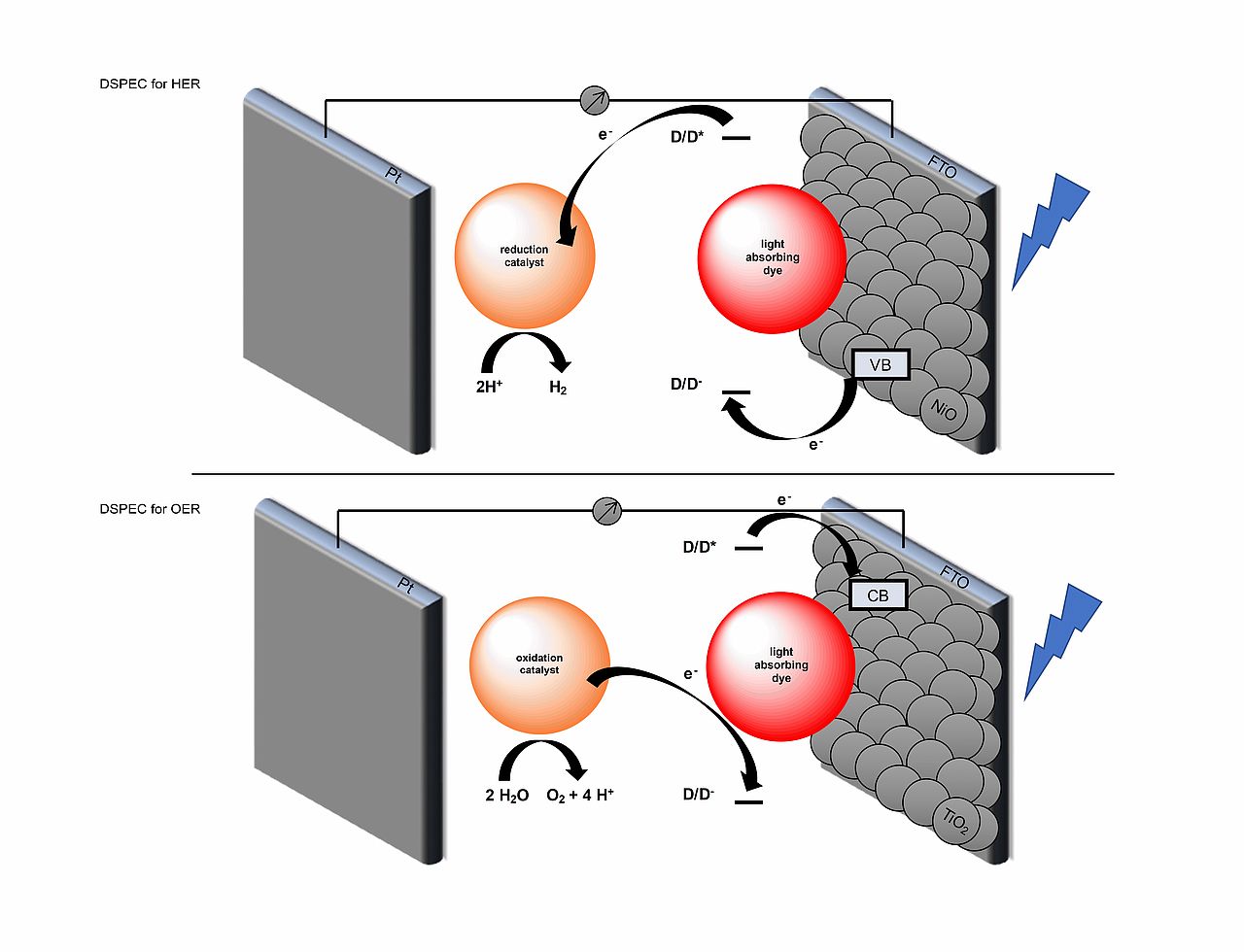Heterogenous catalysis and solar cell applications
Based on the established homogenous photocatalysis like proton or NAD+ reduction as well as water oxidation, our group is interested in heterogenous catalytic reactions for the above-mentioned. To this end the known concepts for homogenous catalysis have to be expanded and adjusted.
We manly focus on NiO (nickel(II) oxide) as a p-type (HEC = hydrogen evolution catalysis) and TiO2 (titanium(IV) oxide) as a n-type (OEC = oxygen evolution catalysis) semiconductor surfaces for the immobilization – the linkage of dye or catalyst and the semiconductor surface - of different Ruthenium chromophores and catalysts. This can either be achieved by electrostatic interaction of the surface with the chromophore / catalyst or by introducing an anchoring group. These anchoring groups bind to the surface and form a semiconductor chromophore assembly. In our group we concentrate especially on phosphonate or carboxylate based anchoring groups. We established different synthetic routes to introduce anchoring groups to chromophores and catalysts as well as chromophore-catalyst assemblies (dyads). The so obtained complexes can be immobilized to a semiconductor surface on a transparent substrate such as FTO (fluorine doped tin oxide) to build up a dye sensitized electrode. The electrodes can be implemented into a measuring cell and either be used in combination with a catalyst to form a substrate, such as H2, in a so called DSPEC (dye-sensitized photoelectrochemical cell) setup, or with a redox mediating electrolyte, such as I-/I3-, in a DSSC (dye-sensitized solar cell) setup.
Recent advances are the synthesis and characterization of an immobilizable photochemical molecular device for H2-generation and the development of different linking strategies towards the immobilization of chromophores to NiO surfaces.

Synthesis of molecular devices for solar cell applications:
[9] M. Braumüller, M. Schulz, D. Sorsche, M. Pfeffer, M. Schaub, J. Popp, B.-W. Park, A. Hagfeldt, B. Dietzek, S. Rau, Dalt. Trans. 2015, 44, 5577–5586.
[10] M. Braumüller, D. Sorsche, M. Wunderlin, S. Rau, European J. Org. Chem. 2015, 2015, 5987–5994.
